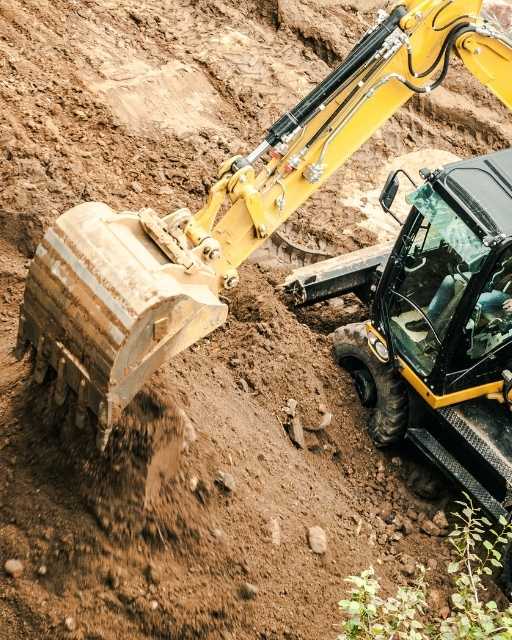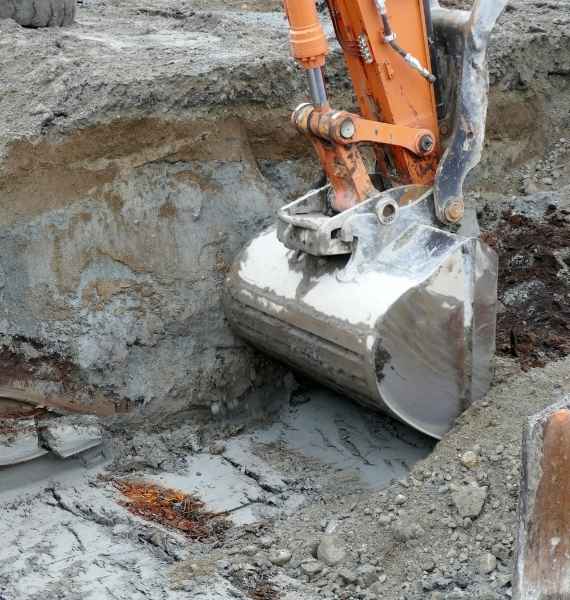Professional excavators and diggers.
Earthmoving, excavation or sometimes referred to as earthworks, is a complex process that requires the use of heavy equipment. If you are in need of excavation work done, it is important to understand how it works and how to choose the right person for the job.
It is the process of digging, moving the earth, and grading. It is performed for a wide range of purposes such as laying the foundation for constructing a building, whether that’s for a new concrete slab for a shed or patio or to level or landscape your yard. Earthmoving can either be small or large scale, which will depend on the amount of earth to be moved.
Performed correctly every time.

Our earthworks ballarat team has a variety of equipment and tools to do the job efficiently. Our excavator is the first and most commonly used equipment for this job, as it performs the actual digging component. This piece of equipment features a long arm with a dipper on the other end. Most excavators can dig anywhere from 5 to 30 tons of earth.
The loader is another equipment used for earthmoving, responsible for carrying and transporting the excavated soil. Motor graders, on the other hand, are tractor-like equipment designed to flatten the surface and level the ground. Other heavy equipment that are used during earth moving and excavation works include bulldozers, breakers and drills, and vibratory roller compactors.


Excavation is an essential step in many types of preparation such as constructing a building or building a swimming pool. It is part of a prepared site plan to remove the layer of soil that is immediately after the topsoil.
It is also done to remove materials that contain excessive amounts of water or those that are deemed undesirable for construction and other purposes.
For construction purposes, excavation is done in order to build the foundation. It provides a solid base for the structure that will be built later on. Once the earth is excavated, the trench might be reinforced (although it varies according to the depth and hardness of the soil).


Get Your Free Quote Today
Get your free quote today by contacting a member of our team.
For all of your earthmoving needs.
Digging poorly can lead to severe and expensive issues if not completed by professional excavators. It’s important to hire experts that are familiar with their equipment and follow best practices to ensure the safety and integrity of the job. We can assist with the below builds.


Excavation for Slab Preparation and Site Cuts
Excavation and earth moving works are very common in construction sites. It is a vital step in the site preparation to ensure that any structure that is built has a solid foundation. Many construction experts believe this is the most important step in the process. Based on the approved plan, the excavation process can begin at the specified site. A concrete slab is the most basic type of foundation used in construction. Once the excavation is done, it is important to process the soil with heavy equipment to ensure that the soil beneath is compact and flat on the surface. The use of compactors helps improve the performance of a concrete slab so it won’t deteriorate over time.
Excavation for Swimming Pools
Excavation is one of the toughest jobs involved in the preparation of a swimming pool. It starts by clearing the area where your pool will occupy and its surrounding area. Before you can excavate, you need to secure permits from the city of Ballarat and observe the building codes. For professionally excavated pools, the process will require the use of heavy equipment such as an excavator. The amount of time it takes to complete the swimming pool excavation will vary according to the size of the pool. For a regular-sized pool, it can take approximately 10 hours. The depth of the pool is also another factor that will impact the duration of the excavation work.
Retaining Walls
A retaining wall is a structure that is built for load bearing purposes. It is designed to keep a part of the soil from sliding or eroding into a particular area. It can also serve an aesthetic value for homes, especially in the backyard. Excavation is an important part of the preparation when building a retaining wall. You need an excavator to dig the area where the foundation for the retaining wall will be along with its surrounding areas. Excavation helps to form a trench around the retaining wall. Once the excavation is done, you must transport the old soil, new soil, and any other materials that you have excavated from the land.
Excavation for Footings
Footings are the structures that are used to support a building, house, bridge, or any other structures. It works by spreading the load in order to prevent the heavy structure from collapsing or sinking. Footing excavation is done after grading the site; only then can excavation begin. Only experts can assess the condition of the soil and determine the ideal depth and width for the footings. They will also determine where the footing will be placed on the excavated area. The size and dimension of the footing is directly related to the size of the structure being built. The bigger the structure is, the bigger the footing should be. This will ensure that it can provide adequate support for the structure.
Excavation Drainage & Trenching
Drainage and trenching is one aspect of a construction plan that requires excavation done. It will involve physically removing soil from the ground in order to make room for the trench and drainage pipes. It is also a method used to fix problems with drainage pipes. If you are installing drainage pipes or suffering from issues like blocked drainage, then excavation is required. This process requires the use of heavy equipment to provide enough room for the pipes to be fitted in. As for trenching, this process involves forming a cavity or depression on the surface of the Earth just below the ground surface.
Excavation Post Hole Boring
Post hole boring is the process of digging deep but narrow holes for posts. This step is required when building a retaining wall, fence, or any other similar installations. The depth of a post hole should be about a third or half of the above ground height of the post. Its diameter is 3 times the width of the post. There are plenty of tools available for post hole boring and you can choose from manual or powered options. The right tool should be able to help you dig straight into the ground without creating large craters that need to be refilled once you’re done. When you need excavation work done, you can hire a professional to do it or make use of heavy equipment to get the job done correctly and with higher efficiency.
If your household contains someone who has difficulty walking or moving around, then concrete is an excellent choice for a walkway. It provides stability and an even surface, meaning no slippery slopes, gaps or cracks that could make it unsafe for anyone who might need assistance walking on them, including those with disabilities. You can even install concrete paths between different spaces to make your house more practical and let you access certain areas of it from anywhere in the home. For example, if you frequently need to carry things from your house to the shed but get tired of stepping through muddy grass just to get there, then linking these two might just do the trick! Not only can concrete pathways be a beautiful addition to your yard, but by adding these cement paths through the grass, you’re preserving it for future generations as well.
In the last step of your pathway design, you have the opportunity to really make your pathway stand out. Adding colour or patterns to your concrete pathways can dramatically enhance their visual appeal. There are a variety of concrete colours and patterns available that will fit any style or mood desired for this final phase in designing an outdoor space.
We're committed to
Premium Workmanship
Quality Designs
Competitive Pricing


Get Your Free Quote Today
Get your free quote today by contacting a member of our team.